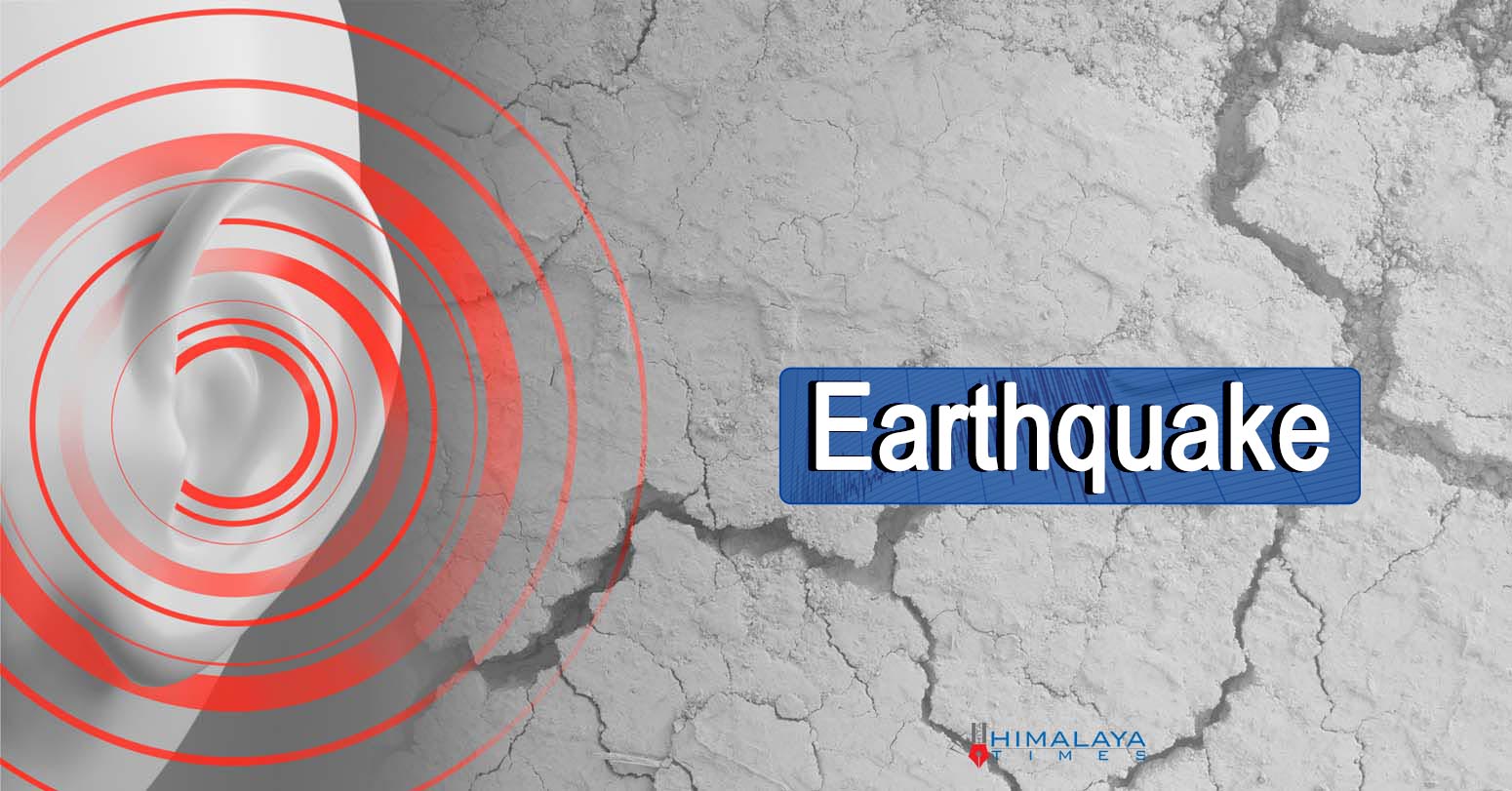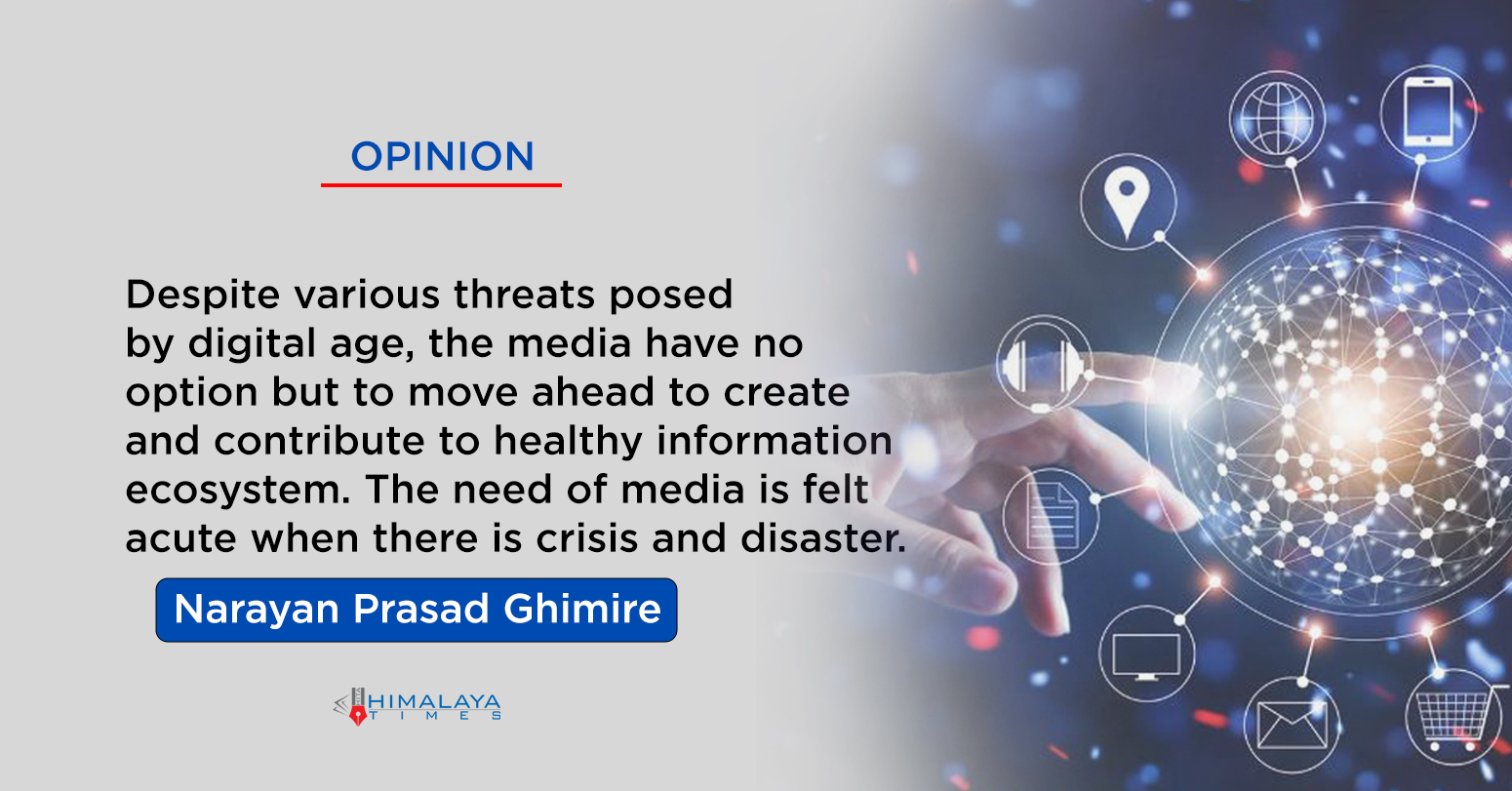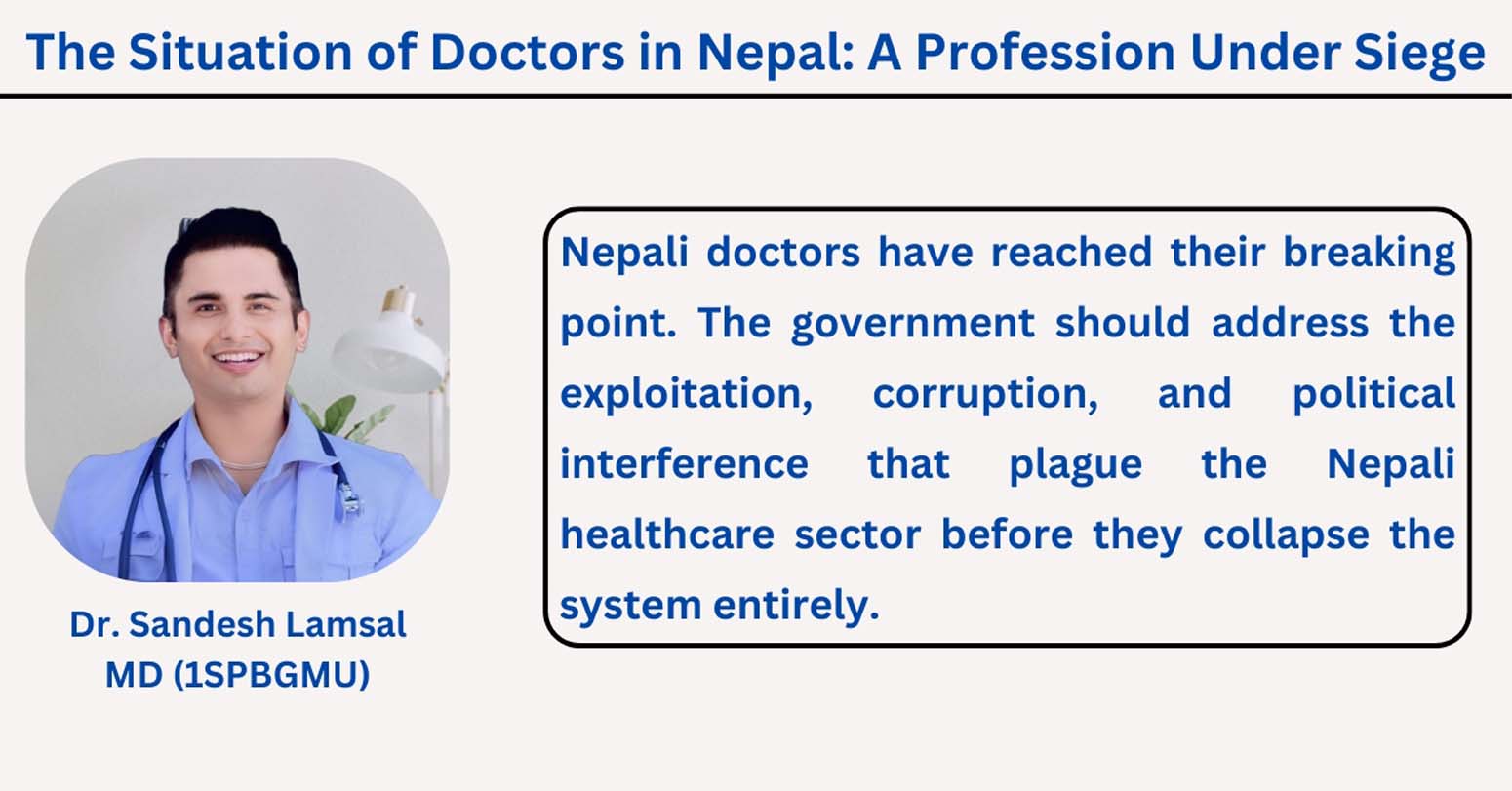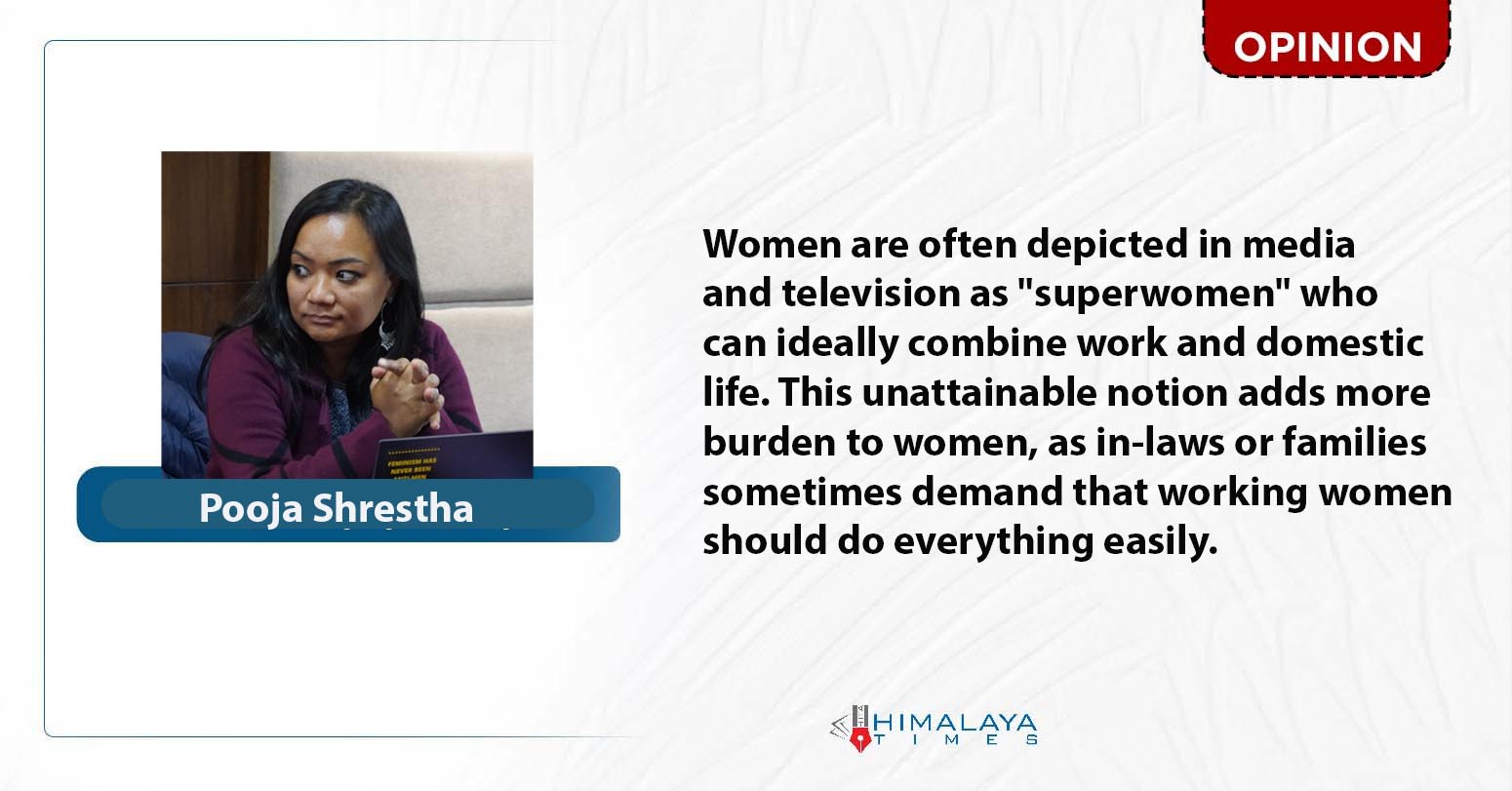- Narayan Prasad Ghimire
At a time when digital age is lauded much for the unprecedented opportunities with numerous benefits it has ensured, host of challenges it has brought forth can not be ignored. It depends on how capable we are to explore positive sides by avoiding negative effects of digital facilities.
Journalism is one of the professions that has witnessed new challenges in the digital age. Spread of fake news: dis/misinformation online is a defining problem faced by journalists and media. When the fake news is widely circulated, those to be blamed first are journalists, which, however is wrong. For lack of media and digital literacy, people falsely blame journalists behind it. People think that the task of creating and disseminating information is of journalists. But, it is disrupted now- in the digital age- that anyone can produce and spread news of his/her interest and take advantage of the situation.
It has direct impact on public trust in media. Therefore, media and journalists need to make people aware that all information spread in social media- Facebook, Twitter, YouTube, TikTok- may not be real and not prepared by journalists. In journalism, gate-keeping is done by the editors and factual news stories prepared for dissemination to the public.
When every internet user- irrespective of skills, profession, expertise- joins social media and disseminate whatever he/she finds new, the facts and truth are in crisis. Once the information is not verified, it has gross impact on people and society. It results in uncertainty, chaos and conflict. It is deleterious to a functional democracy. Only healthy information ecosystem can serve people's need and aspiration.
The very convenience in production, consumption and dissemination of information in digital age is a severe challenge to legacy media. In the wake of this reality, the legacy media- print, radio- are forced to undergo change. Without adopting change, they are slow off the mark. In order for their wider visibility, they have utilized the social media -Facebook and Twitter- extensively. Similarly, social media themselves become sources of news in many cases because number of people using social media and updating issues have grown sharply across the globe. The recent statistics show that there are more than 2.96 billion monthly active users of Facebook in the world. In Nepal too, it is said nearly 14 million people use Facebook and 1.5 million use Twitter.
Considering the benefits of digital spheres, the print media have joined the bandwagon of going digital in Nepal too. They have their own digital outlets- websites. Similarly, regular update of news by the print media in social media has therefore been mandatory.
Another threat posed by the digital age is the sharp decline in advertisement to legacy media. As the advertisers found that number of people were shifting to digital spaces, the advertisement went digital, thereby denting financial income of traditional media.
Despite various threats posed by digital age, the media have no option but to move ahead to create and contribute to healthy information ecosystem. The need of media is felt acute when there is crisis and disaster. In Nepal's case, the role played by Radio Nepal during 2015 Earthquake was appreciated much when many journalists in other media found it difficult to continue job citing insecurity.
But, it is serious indeed that the spread of fake news is severe during crisis. As the crisis is coupled with loss and despair, the floods of dis/misinformation add woes to people. The flood of news that lacked data, and factual and scientific information during COVID-19 panicked the world. Many people were bound to follow wrong measures to prevent spread of coronavirus, which ultimately took their lives. In view of the deluge of fake news plaguing the world, the World Health Organization had declared 'Infodemics' and urged all concerned to be aware of the pandemic of wrong, baseless and even manipulated information.
Journalists face challenges and threats to profession when the fake news are created and disseminated against them. In the digital age, the elements which want to take advantage of the fluid situation, intimidate journalism with manipulation of news which are baseless and targeted. At such situation, even the free press and press freedom are in casualty. The journalists' pursuit of reaching and telling truth is jeopardized by the manipulation of information.
It is therefore high time the journalists built technical and digital capacity to equip themselves against fake news and protect and promote free and professional media. Fact-checking must be made an essential part of journalism. Similarly, media and journalists' collaboration with the media colleges and organizations working on fact-checking and media literacy can be another measure to act together against the digital evil- fake news.




















Middle-aged man spends millions to
Dr. Dharam Raj Upadhyay: Man
Breathing The Unbreathable Air
Comprehensive Data Protection Law Critically
Gender Differences In Mental Healthcare
Erosion of Democracy